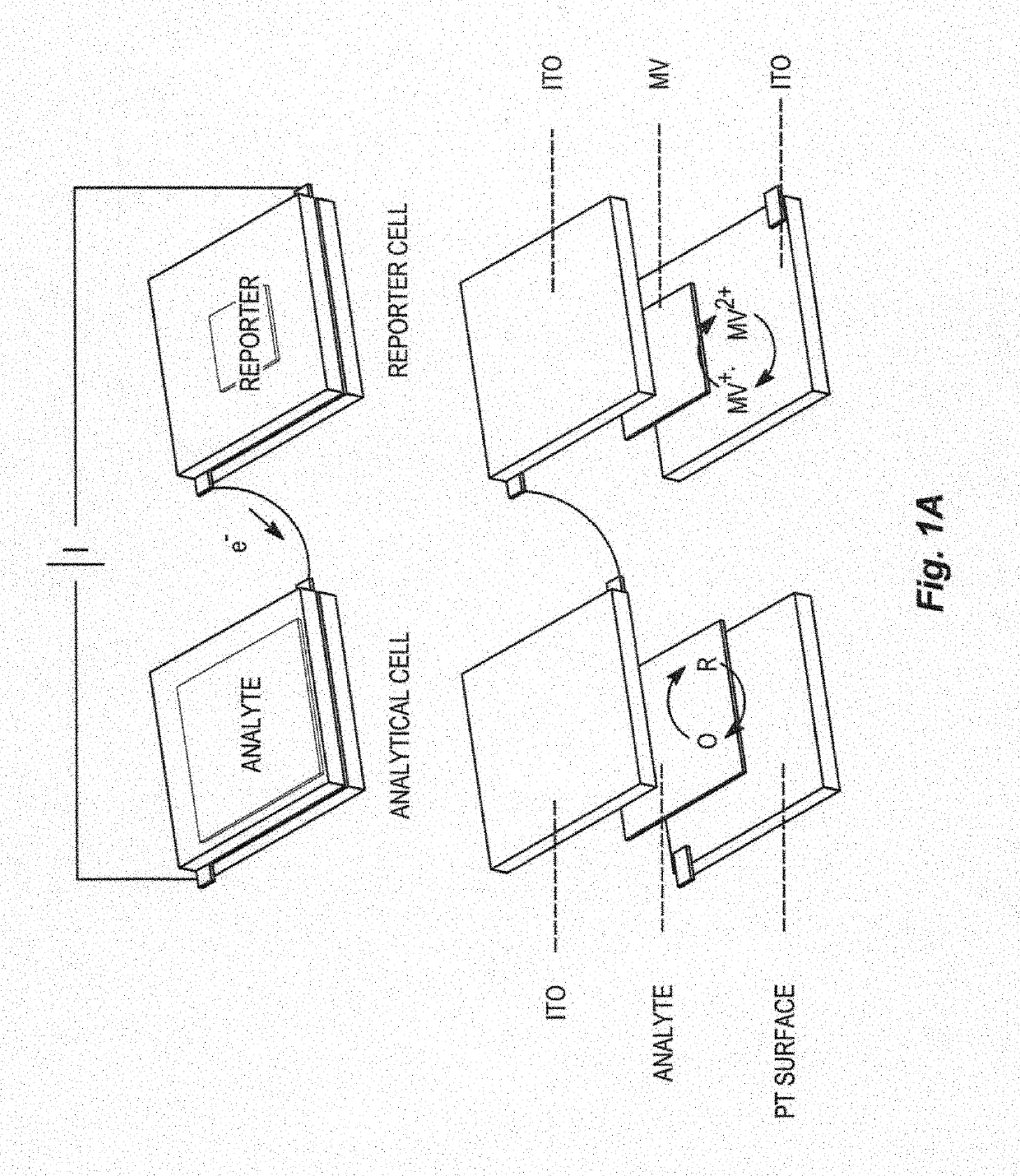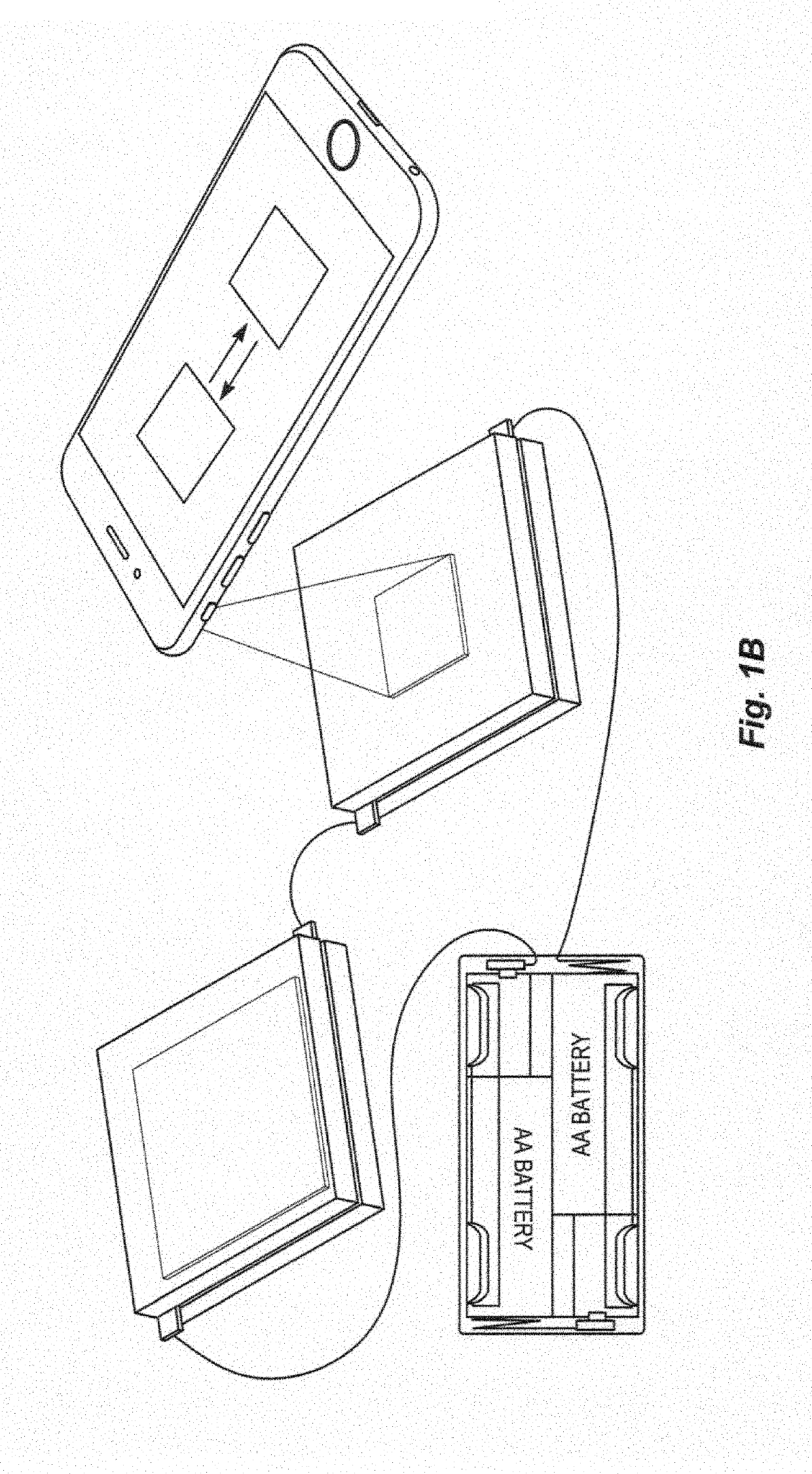Closed bipolar electrode-enabled electrochromic detector for chemical sensing
a closed bipolar electrode and detector technology, applied in the direction of instruments, material electrochemical variables, analysis using chemical indicators, etc., can solve the problems of complex equipment and optical alignment for data collection, few electrochemical biosensors have successfully made the transition from benchtop instruments to portable point-of-care devices, etc., to achieve the effect of simple and portability of the devi
- Summary
- Abstract
- Description
- Claims
- Application Information
AI Technical Summary
Benefits of technology
Problems solved by technology
Method used
Image
Examples
example 1
Device Assembly of Electrochromic Sensor Device for Single Analyte Detection and Colorimetric Measurements
[0127]Electrochromic sensor devices were constructed to include analytical and reporter cells, connected by a closed BPE. A glass slide coated by Ti / Pt (Ti 10 nm, Pt 100 nm) was used as a working electrode (WEa) in the analytical cell. The analytical cell (1.5 cm×2.5cm) was fabricated by placing tape (50 μm thick) around the periphery to act as a spacer between the analytical cell working electrode, WEa, and the ITO BPE. The structure of the reporter cell was similar to that of the analytical cell, except that instead of using a Ti / Pt coated slide, an ITO slide was employed as counter / quasi reference electrode (CE / QRE) (FIG. 1(a)). A small (1 mm×1 mm) observation window was opened in the tape spacer and filled with indicator solution, 10 mM methyl viologen in 0.1 M KCl. The BPE was composed of the top ITO electrode in both analytical and reporter cells connected to each other by...
example 2
Device Assembly for Multiplex Sensing
[0129]Circular analytical cells (Ø 10 mm) and reporter cells (Ø 1 mm) were fabricated by placing tape (50 μm thick) around the periphery to act as a spacer between the analytical cell working electrode (WEa) or counter / quasi reference electrode (CE / QRE) and the ITO CBE, respectively, FIG. 8(a). The observation window in the reporter cell was opened in the tape spacer and filled with indicator solution, e.g. 10 mM methyl viologen in 0.1 M KCl, and the analytical cell was opened and filled with analyte solution. Analytical and reporter cells were connected by a CBE, which was composed of the top ITO electrodes in both analytical and reporter cells connected to each other by a Cu wire. For multiple analyte detection, the device consisted of three sets of independent electrochromic sensors to monitor the detection of three different analytes simultaneously. In this design, the WEa and CE / QRE were shared by three sets of sensors, while each sensor had...
PUM
 Login to View More
Login to View More Abstract
Description
Claims
Application Information
 Login to View More
Login to View More - R&D
- Intellectual Property
- Life Sciences
- Materials
- Tech Scout
- Unparalleled Data Quality
- Higher Quality Content
- 60% Fewer Hallucinations
Browse by: Latest US Patents, China's latest patents, Technical Efficacy Thesaurus, Application Domain, Technology Topic, Popular Technical Reports.
© 2025 PatSnap. All rights reserved.Legal|Privacy policy|Modern Slavery Act Transparency Statement|Sitemap|About US| Contact US: help@patsnap.com



